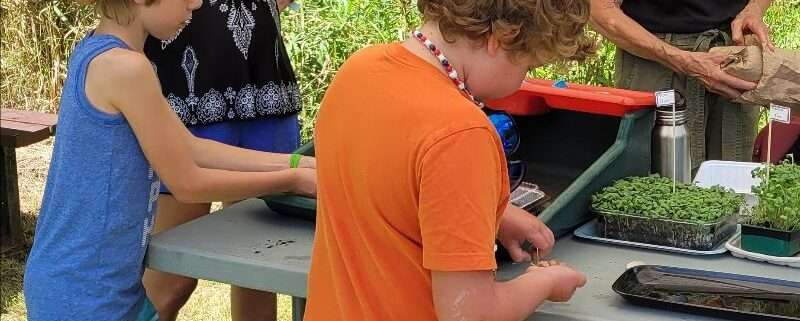Let’s Get OUTSIDE!
We are hearing all too often about children spending too much time indoors and in front of screens (phones, tablets, computers and TV). Have you heard about nature deficit disorder?
What happened to parents telling their kids to stay outdoors until the street lights came on? Or kids playing street hockey, using their backyards or simply walking to buy a Popsicle? Studies are showing that children are suffering from a lack of being outdoors.
How are we going to ensure that they, the future stewards of the environment and our planet, participate in keeping it alive? The answer to this question is that we need to expose children to nature, starting at a young age, building upon their natural curiosity.
There is a pre-existing bond that children have with nature. Whether they are sitting on the grass, beach or curbside, floating little sticks or leaves down rivulets of rainwater, it all seems like such a natural way to spend time outdoors. They jump in puddles, even as their teacher or parents say Nooo! What better way to spend time outside than walking through the mud for the sheer joy of feeling your shoes being sucked in and the delicious sound of their release.
Time in nature is soothing.
Environmental education is important in developing effective ties to nature, the local environment and positive attitudes towards the earth we live in. It is important to give children the opportunity to bond with the natural world and create an affinity for the environment. By building the Massawippi Trail both in the village of North Hatley (Scowen Park) and on the ridge in Sainte-Catherine-de-Hatley, the Massawippi Trust has given the public the right to walk ‘on the wild side’. Testimonial after testimonial are filled with praise for the positive experience of each walker.
By getting kids outdoors with their schools or their families and friends, we are giving them access to a healthy experience, offering them the benefits of physical activity as well as improving their cognitive skills. They will perform better and be less open to the risks arising from stress and obesity. We have even seen a link between children who spend time in nature and the development of pro-environmental attitudes and behaviours as adults.
There are several factors shaping the new reality. Often, both parents are working and sometimes hold more than one job each. Children are highly scheduled with their activities and have less free time for play. There is a fear of crime. ‘What if my child is hurt or worse?’ in what is perceived as an unsafe environment. There is a diminishing amount of natural space as more and more people live in cities. In 2021 nearly three in four Canadians live in large urban centres with populations of over 100,000 people (Statistics Canada 2022-02-09 www150.statcan.gc.ca ). Race, ethnicity and socio-economic status may also influence a child’s access to nature.
One study, conducted by Balmford, Clegg, Coulson, and Taylor (2002) showed that eight-year-old children were more proficient at identifying popular Pokémon characters than they were at recognising common local flora or fauna.
When thinking ahead to the future of the environment and our world, we need to play a role in exposing children to nature so that they can learn to love it and not fear it. “What’s important is that children have an opportunity to bond with the natural world, to learn to love it and feel comfortable in it, before being asked to heal its wounds” (Sobel, 1996, p. 10)
In the famous words of Jacques Cousteau, “People protect what they love.” By getting outside, we will develop deeper connections to the environment and conservation helping the love grow in our hearts.












